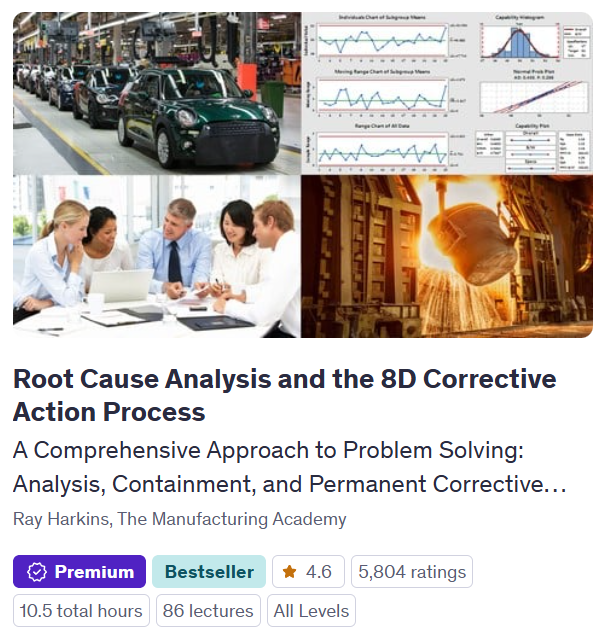What is it?
Manufacturing companies are struggling with the persistent and growing problem of finding employees with the skills needed to sustain and grow their businesses. This problem is commonly called the “skills gap.” Other sectors like construction are also affected by this skills gap. But at the macroeconomic level, the skills gap in manufacturing is particularly profound because of the growth in other sectors that manufacturing influences.
Experts estimate that this skills gap may leave 2.4 million manufacturing positions in the United States unfilled through 2028, with a potential economic impact of $2.5 trillion. A 2020 McKinsey Global Institute study reports a similar phenomenon in the European Union and United Kingdom.
What skills are lacking?
According to analysts, the workplace skills specific to manufacturing that are lacking fall into three major categories: technological, complex cognitive, and soft skills. Technological skills include coding, robotics, artificial intelligence and internet of things. Complex cognitive skills include analytics, supply chain management, and creative problem-solving. Soft skills include leadership, entrepreneurship, negotiating and taking initiative.
Why is there a skills gap?
The manufacturing skills gap persists for a variety of reasons. These reasons include both and demand side factors including the technological renaissance and the long economic expansion in the United States; and supply-side factors like the “Gray Tsunami” and an unfavorable view of manufacturing among Millennials. Many analysts posit a fifth factor known as “Degree Inflation”.
Just as modern generations look to the late 14th century as the beginning of The Renaissance — a period of cultural, artistic, political and economic “rebirth” following the Middle Ages – future generations will look to the late 20th century as the beginning of the technological renaissance, when humanity moved from scribbling on paper to augmenting human capabilities in a galaxy of 1’s and 0’s. For us moderns, unfortunately, keeping up with this explosion of technological advances is difficult, even if we’re trying.
From 2012 through 2019, 1.5 to 2.5 million Baby Boomers (those born between 1946 and 1964) per year retired from the workforce, taking with them troves of job and industry-specific knowledge. By the third quarter of 2019, a total of 25.4 million Baby Boomers had retired. This substantial trend accelerated during the coronavirus pandemic as an additional 3.2 million Baby Boomers permanently retired from the workforce in 2020.
Compounding the effect of this so-called “Gray Tsunami”, the economic expansion from 2009 to 2020 was the longest in U.S. history when skilled employees were needed more than ever.
According to a recent survey, only 49% of Millennials (those born between 1981 and 1998) agreed (as compared to 59% of Baby Boomers) that manufacturing could offer a fulfilling career. This generational difference in their view of manufacturing may also contribute to the widening skills gap.
A final reason for the felt effects of the manufacturing skills gap is many companies’ traditional reliance on a 4-year college degree as a proxy for the necessary job skills, or at least the ability to gain them. This is so-called “Degree Inflation”, where employers’ demand for 4-year degrees has increased for positions that haven’t typically require one.
Unfortunately, the rapidly rising cost of college tuition has edged out many young adults and reskilling mid-career adults from pursuing a college education. Furthermore, employers are expressing a growing frustration with the job readiness of recent college graduates. In many cases, employers invest substantial resources to upskill even high-achieving college graduates.
What is being done to focus on skills instead of degrees?
This widening skills gap has led certain sectors to re-think their hiring practices, particularly the common requirement for a 4-year college degree. Tech sector companies like Apple, Google and IBM were among the first to eliminate the degree requirement for many of their positions, and shift to a skills-based pre-hire screening process. Afterall, if a potential job candidate can demonstrate the required level of competency in Python programming, for instance, does it matter whether they learned that skill in a coding bootcamp or at an Ivy League university?
More recently, the U.S. government via an executive order by former President Trump in June of 2020, began an overhaul of its hiring practices. The order requires agencies, where possible, to shift to skill and competency-based assessments for hiring instead of the outdated degree-based assessments.
Of course, shorter-term skills-based training cannot replace a longer-term university education. A diverse university education cultivates critical thinking, written communication, and analytical reasoning – also skills in high demand by industry – that cannot be attained through a short-term training experience.
What can be done to lower the barriers for obtaining these manufacturing skills?
These factors – the persistent skills gap, the rising cost of college, the lack of job readiness of recent college graduates, and the openness to skills-based hiring – along with broad scale technological advancements like high-speed internet access have expedited the growth of online learning platforms like as Coursera, edX, Udemy and Skillshare.
Learning platforms lower the barriers of entry for educators to share their knowledge with a mass audience. They do so by offering web tools like video hosting and course landing pages, e-commerce tools like credit card transactions and return policies, and market tools like affiliate programs and student review systems. By providing these tools and services, platforms collectively allow universities, institutions and individuals to focus on creating educational content and not the infrastructure needed to support it.
Learning platforms also have the power to extend educational opportunities to anyone with an internet connection and basic computer skills. Since the early 2010’s, these platforms have offered low-cost, high-quality online courses to millions of students on an enormous range of topics including personal finance, foreign languages, and many others including skills most needed by manufacturers.
By utilizing the power of these learning platforms, employers, educators and manufacturing professionals have the potential to connect at unprecedented levels. Professionals can advance their skills sets at a reasonable cost. Employers can draw from new pools of qualified candidates. And educators working within these learning platforms can help close the manufacturing skills gap.
Ray Harkins is a manufacturing professional and online educator, working diligently to help close the manufacturing skills gap. You can find him at www.themanufacturingacademy.com, and use the following discount coupon codes to get great deals of some of his most popular and highly rated classes:
Root Cause Analysis and the 8D Corrective Action Process
Return on Investment Analysis for Manufacturing



